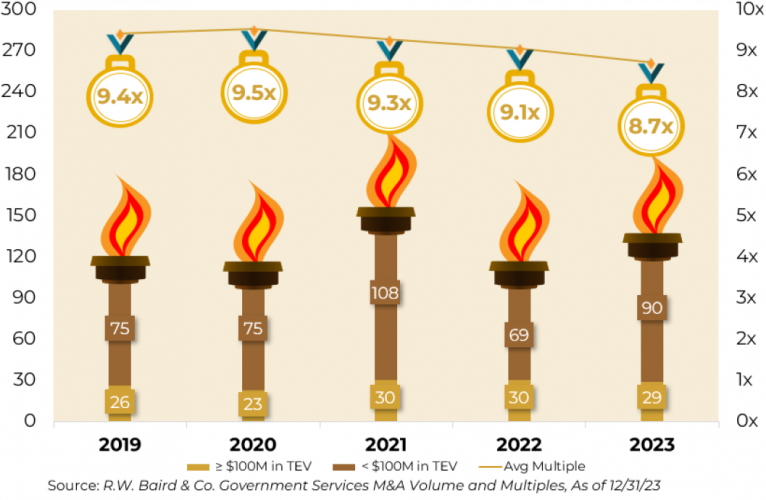In the quest to connect the innovative products and services created by small technology start-ups with federal agencies facing mission challenges, the Small Business Innovation Research (SBIR) program bridges the gap. This impactful initiative fosters technological innovation and stimulates economic growth by allowing entrepreneurs, start-ups, and small businesses to submit proposals for research and development (R&D) projects. If selected, these organizations receive funding to further develop their offerings, facilitating the leap from early-stage concepts to commercial viability while addressing the specific needs of federal agencies.
How Does the Program Work?
Each year, SBIR awards over $4 billion in grants, ranging from $50,000 to $1.5 million, in areas aligned with U.S. government national priorities, including autonomous systems, artificial intelligence (AI), machine learning (ML), cloud computing, cybersecurity, biotechnology, and space technology. Selected companies undergo a three-phase process: proof of concept, technology development, and commercialization. At the commercialization state, non-SBIR resources – such as private investors, government contracts, or sales revenue – take over funding. Various agencies across the Department of Defense (DoD) and federal civilian sector, including the U.S. Army, Navy, Air Force, Space Force, Small Business Administration (SBA), Department of Homeland Security (DHS), and many more, distribute SBIR funding annually.
Benefits of the SBIR Program for Small Tech Businesses and Investors
Participating in the SBIR program provides small businesses with early-stage, high-risk funding that may otherwise be inaccessible. The grants and contracts do not require equity stakes for issuing agencies, allowing businesses to retain full ownership and control. SBIR funding enhances the competitiveness of participating small businesses, enabling them to develop cutting-edge technologies and solutions that keep pace with an ever-evolving market.
For venture capitalists (VCs) seeking validation for investments in promising portfolio companies, SBIR awardees often develop disruptive technologies that signal prime investment opportunities. SBIR funding effectively de-risks early-stage ventures, allowing VCs to leverage government-backed validation to invest with confidence. Additionally, the program ensures that VCs are investing in areas critical to national security and economic growth, since SBIR-funded projects align with federal R&D mission needs.
Where Does Deep Water Point & Associates (DWPA) Fit In?
DWPA combines government expertise and industry insights, providing immense value to small businesses and VCs looking to thrive and grow in the complex federal market. With a bench of over 450 government experts averaging 32 years of experience, DWPA is the ideal partner to help you mitigate risks, navigate complexities, and increase your chances of success in the U.S. federal marketplace.
As part of your SBIR journey, DWPA leverages AI to offer automated opportunity alerts tailored to your specific interests and strengths (or those of your portfolio companies). Once the right opportunity is identified, we assist in crafting compelling proposals that improve your probability of securing SBIR funding. We also provide ongoing SBIR training to educate VCs and portfolio companies on best practices, along with data-driven insights into the total addressable market (TAM) within the federal government, including government spending, competition, and routes to market. Throughout your journey, we provide transaction advisory services and build superior merger and acquisition (M&A) situational awareness to support your continued growth. The DWPA SBIR program also provides potential access to third-party Cloud Service Provider (CSP) partner funding to accelerate the small tech’s market entry.
Ready to Get Started?
If you’re eager to bring your innovative idea to market or explore promising new investment opportunities, we’re here to guide you! Click here to learn more about the SBIR program and DWPA’s SBIR service offerings today.







